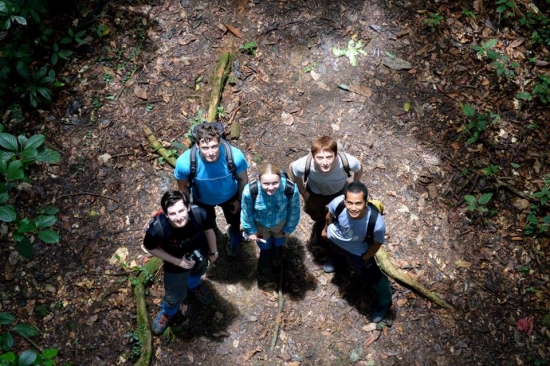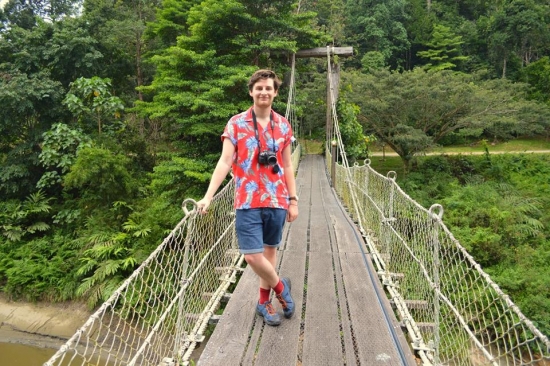The Danum Valley Field Centre is nestled on the fringe of Danum Valley Conservation Area, one of the largest areas of protected lowland dipterocarp rainforest in Malaysian Borneo. To the east is secondary regenerated forest, and to the west is ancient primary forest, both home to diverse and characteristic flora and fauna. I spent 10 days living and working at the field centre in September 2015, taking part in a field course on tropical ecology as part of my second year undergraduate course in biological sciences at the University of Oxford.
The travel grant funded a large part of my course (already subsidised, yet still expensive) covering teaching, accommodation and food whilst at Danum. Releasing financial pressure from the field course also gave me the opportunity to travel Java in the week after. There were daily lectures on South East Asian forest ecology and conservation, as well as four tutorials covering the regions biogeography, ecology and experimental design of the studies conducted there. The teaching was geared towards critical analysis of past studies, and so improved my critical reading of papers and study design. Fieldwork in the forest was completed everyday of a tutorial, teaching me practical skills of mist-netting, taxonomy, predation dynamics and experimental design in the forest.
 Working in the forest was fantastic, and was often interrupted by a chance to watch orangutans gorge on figs or a troop of maroon langurs play over our heads. One long day was spent travelling between the major projects set up by the South East Asian Rainforest Research Project (SEARRP) such as INFAPRO and The Sabah Biodiversity Experiment, guided by the director of SEARRP, to better understand the impact of logging and current efforts to regenerate forest.
Working in the forest was fantastic, and was often interrupted by a chance to watch orangutans gorge on figs or a troop of maroon langurs play over our heads. One long day was spent travelling between the major projects set up by the South East Asian Rainforest Research Project (SEARRP) such as INFAPRO and The Sabah Biodiversity Experiment, guided by the director of SEARRP, to better understand the impact of logging and current efforts to regenerate forest.
Being able to connect with the flora and fauna close up and then seeing what was being done to protect and regenerate their forest was inspiring. The following day we trekked to Trembaling waterfall (partly named for pangolins, but sadly no sightings) for a swim. Every day was a long one though I never felt exhausted; birding at sunrise gifted me kingfishers and hornbills, whilst night walks and drives let me get close to lanternbugs, pit vipers and flying squirrels to name a few.
My final three full days at Danum were occupied with a small group project. I decided to focus on mammals; more specifically on the relationship between human disturbance of trails and mammal diversity (which proved inconclusive but very fun). Despite our lack of data, we were able to trek far and wide, wading rivers and sighting gibbons, civets, a great argus and orangutans along the way. Data processing has given me practical experience of statistical analysis, and my presentation skills were improved by delivering an oral presentation on my project to the class, tutors and research assistants.
I would like to give my thanks to the Royal Society of Biology for helping me fund this expedition. The research and life experiences I’ve gained are invaluable.
Travel grants of £500 are available every year to give RSB members the opportunity for overseas travel in connection with biological study, teaching or research. Read reports from our previous grant recipients and submit your application by 17:00 on Tuesday 1st March 2016.


